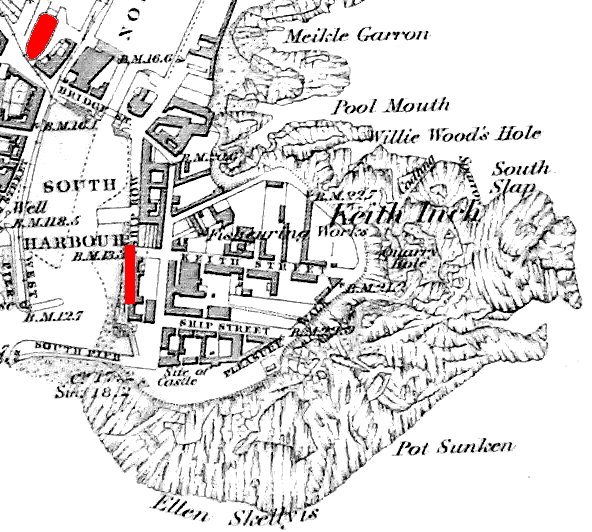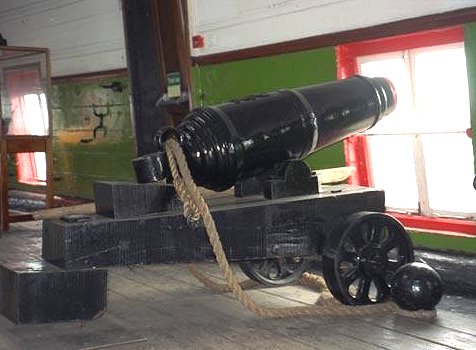| Peterhead boilyards |
|
There
were three boilyards in Peterhead, all on Keith Inch, on the seaward
edge of the town, to minimize the impact of the foul smells and
sights produced by the industry.
The ordnance survey map of 1872 shows the south harbour and, to its right Keith Inch, where the boilyards were situated. Blubber box quay is highlighted in red, as is the dry dock in the north harbour which was built in 1855 to accommodate the Greenland whalers
The Old Whale Fishing Company at 7 Ship Street was the oldest, having been founded in 1801, and continued to operate up to around 1910. The other two yards were on Castle Street. Mr. Skelton's Yard (a.k.a. the Peterhead Whaling Company) was at number 18-20 and Mr. Hutchinson's Boil Yard (a.k.a. The Union Boilyard and Thomas Arbuthnot and Co.) was based at 9-13. Today, these areas are occupied by engineering firms servicing the offshore petroleum oil industry. A surviving store list for the Union Boilyard shows that in 1838 they were operating with a boiler holding around 5 tons of blubber. (After Alex R. Buchan, The Peterhead Whaling Trade, 1993).
*Carronades were short, lightweight guns which fired a slow, very heavy shot over a short range. The slow shot ripped off deadly wooden splinters, where a faster shot from a long gun would punch a relatively neat hole. So called because they were first cast at Carron Ironworks, near Falkirk. The gun shown below is mounted on HMS Unicorn and is a replica of a 32 pounder Carronade, made and presented by the Carron Company of Falkirk, after which the type of gun is named. The company developed this type of gun in 1776, and presented this replica in 1976. HMS Unicorn was launched in 1824 as a 46 gun sailing frigate for the Royal Navy, and she is now one of the most completely original preserved wooden ships in the world. Her armament would have included 14 of these 32 pounder Carronades.
|
| Martyn Gorman · University of Aberdeen · Department of Zoology · © 2002 |

